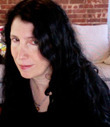Caroline Leavitt's Blog, page 36
November 5, 2016
Culture class, Singapore, speaking Singlish, and Cheryl Lu-Lien Tan's brilliant, darkly funny, Sarong Party Girls
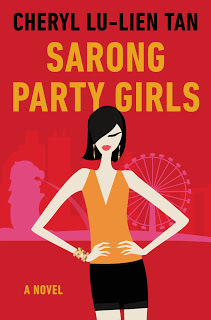
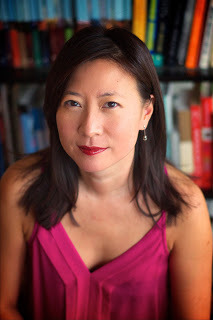 <!-- /* Font Definitions */ @font-face {font-family:Times; panose-1:2 0 5 0 0 0 0 0 0 0; mso-font-alt:Times; mso-font-charset:0; mso-generic-font-family:auto; mso-font-pitch:variable; mso-font-signature:3 0 0 0 1 0;} @font-face {font-family:Times; panose-1:2 0 5 0 0 0 0 0 0 0; mso-font-alt:Times; mso-font-charset:0; mso-generic-font-family:auto; mso-font-pitch:variable; mso-font-signature:3 0 0 0 1 0;} @font-face {font-family:Georgia; panose-1:2 4 5 2 5 4 5 2 3 3; mso-font-alt:Georgia; mso-font-charset:0; mso-generic-font-family:auto; mso-font-pitch:variable; mso-font-signature:647 0 0 0 159 0;} /* Style Definitions */ p.MsoNormal, li.MsoNormal, div.MsoNormal {mso-style-priority:99; mso-style-unhide:no; mso-style-qformat:yes; mso-style-parent:""; margin:0in; margin-bottom:.0001pt; line-height:200%; mso-pagination:widow-orphan; mso-layout-grid-align:none; text-autospace:none; font-size:12.0pt; font-family:Times; mso-fareast-font-family:"Times New Roman"; mso-bidi-font-family:Times;} .MsoChpDefault {mso-style-type:export-only; mso-default-props:yes; font-size:10.0pt; mso-ansi-font-size:10.0pt; mso-bidi-font-size:10.0pt;} @page WordSection1 {size:8.5in 11.0in; margin:1.0in 1.25in 1.0in 1.25in; mso-header-margin:.5in; mso-footer-margin:.5in; mso-paper-source:0;} div.WordSection1 {page:WordSection1;} </style><br />--><span style="color: #1a1a1a; font-family: "georgia"; font-size: 16.0pt; line-height: 200%;"></span> <br /><ul id="testimonials"><li class="slide" style="opacity: 0.435775;"><blockquote><b><span class="quote">“In Singapore this satirical novel of predatory beauties would be regarded as deeply subversive – for the rest of us, and anyone familiar with life in that little island city state, it is hilarious and original.”</span></b><b><span class="by">—Paul Theroux</span></b></blockquote></li></ul><br /><a href="http://cheryllulientan.com/">... Lu-Lien Tan</a> is a New York-based journalist and author of “<i><a href="http://cheryllulientan.com/books/a-ti... Tiger In The Kitchen: A Memoir of Food & Family</a>“</i> (Hyperion, 2011). She is the editor of the fiction anthology <i>“<a href="http://cheryllulientan.com/books/sing... Noir</a>“</i> (Akashic Books, 2014). I'm so honored to host her here. Thank you, Cheryl!<br /><br /><br /><b>I always think that an author is driven to write a certain book. What was driving you?</b><br /><br /> This is a book I've probably had in the back of my mind for years, since I was a teenager growing up in Singapore, because I've always found Sarong Party Girls and the culture around SPGs completely fascinating. This little subculture in Singapore, to me, says something possibly significant about the country and the gender and racial politics of the place. “Sarong Party Girls” is a -- slightly derogatory -- term that refers to a type of woman in Singapore whose main goal in life is to meet, date and perhaps marry an expat Caucasian man. As my protagonist Jazzy and her cohorts explain in this satirical novel, the ultimate goal is to have a “Chanel baby” -- a half expat, half Singaporean child that is such a status symbol it is the “Chanel of babies.” I find that term -- which I actually heard from a girlfriend in Singapore, though spoken (perhaps half) in jest at the time -- hilarious and think it says a lot about a kind of hyper materialism you can sometimes see in modern Asia, and perhaps, how race and class fits into all of that. I often wondered, why is it that there exists a certain type of woman who sees status and material value in having a Caucasian husband or boyfriend? What are the forces of our history -- colonial or otherwise -- that have shaped this desire and belief in the value of Caucasian-ness? Seeing SPGs and peering in at SPG bars in Singapore when I was a teenager always made me ponder these questions, so when it came to writing my first novel, this very Singaporean character that had always fascinated me came to mind.<br /><br /><b> I love the culture clash in your novel, the beauty of the old traditions and cultures versus the siren song of the new. Can you talk about that please?</b><br /><br /> Singapore is a small country -- you can drive from one end of the island to the other in about 90 minutes, perhaps even less. It’s also a country whose population has really boomed in the last several years, partly because of an influx of expats from all over -- China, the U.K., Australia. One of the founders of Facebook became Singaporean a few years ago and lives there now. Because Singapore is so small, this new wealth -- and the lifestyle that’s come with it -- rubs right up against the traditional, often conservative and still patriarchal Singapore that still forms the canvas of the country and that, to me, is fascinating to watch. Jazzy, my protagonist, finds herself jammed right between the two -- she grew up very much in the milieu of the old, traditional patriarchal Singapore in which she’s encouraged to marry a good Singaporean boy who can give her a decent home and life but at the same time there is the siren song of the new Singapore with its glitzy clubs and the specter of a glittering, modern life -- and she sees having an expat husband as being her ticket into that realm. Bettering yourself via a good marriage -- that's a story you see in many cultures, however. In some ways, so many books (Jane Austen, Evelyn Waugh etc.) have explored this terrain in varying ways. This story is just painted with a distinctive Singaporean brush.<br /><br /><b>Tell us about Singlish? And how fun was it to write?</b><br />It was incredibly liberating, actually. I love Singlish and I love slipping back into it whenever I touch down in Singapore or when I bump into a Singaporean friend in New York. I often feel my truest self when I speak Singlish -- albeit not quite the hardcore vulgar Singlish that sometimes appears in "Sarong Party Girls!" So when it came to writing Jazzy, it truly was a joy. The language doesn't seem to have changed much since the time I lived there -- but then again I go back at least twice a year and spend a chunk of time in Singapore so it's not like I'm completely unfamiliar with the country and its rhythms and sounds since I'm based so far away. As I was writing though, I often wrote aloud -- this way I knew right away if a sentence or a phrase sounded off or false.<br /><br /> Also, the Singapore government for many years has had a multimillion-dollar “Speak Good English” movement to encourage Singaporeans to speak perfect standard English instead -- we’ve had no fewer than two prime ministers speak out against Singlish. In a 1999 speech, our founding prime minister Lee Kuan Yew called Singlish “a handicap we must not wish on Singaporeans.” I’ve always bemoaned this active stance against Singlish, a language that I feel reflects the polyglot that is Singapore so well. So it gave me great joy to write this book as Jazzy would speak it -- not in proper Queen’s English or somesuch, which would really have diminished her character and taken away a lot of her energy.<br /><br /><b> What kind of writer are you? Do you outline or just hope the muse follows you?</b><br /><br /> When I started writing SPG, I could see the first chapter and the very last scene very clearly in my mind -- I also had a very strong sense of Jazzy as a character, who she was, how she sounded, how she thought, what she wanted out of life. Apart from that, I had no idea what was going to happen between the first chapter and that last scene -- but I trusted the Jazzy I was hearing in my head to be able to lead me from A to Z and she did. (Having said that, I did make a tweak to what I had thought would happen in very last scene -- my image of it when I started the book had been just a bit more bleak. But at the end of the journey that Jazzy took me through, however, I did come to realize that the Jazzy I had come to know over all those pages would have made a different choice than the original one I had imagined.)<br /><br /> Since this is my first novel, I’m not sure if I can say what my method is, really. All I learned in the writing of “Sarong Party Girls” was that I often had to let Jazzy and her thoughts percolate in my head for days or weeks before suddenly feeling “it.” I’ve told my friends it’s kind of like waiting for the right time to go to the bathroom. If I sit down and try to write a set number of words every day, the prose often feels forced or dead on the page to me. But if I let things percolate until it reaches a point where the dam’s about to burst -- that’s when I sit down to write and it comes out right. I wrote the last 30,000 words of the first draft of this novel in a three-week gush after a few months of waiting, thinking, scribbling bits and bobs here and there, and daydreaming -- and feeling frustrated that I wasn’t writing very much. Right now, I’ve started a new novel and am waiting to go to the bathroom again. Soon, I feel it.<br /><br /> <b>I’m personally always surprised at how the book I initially intend to write turns out into the book I need to write. What surprised you in writing this novel?</b><br /><br /> The anger I felt as I was writing it. I don’t think I realized before starting this book how frustrated I was over conservative attitudes and the forms of institutionalized misogyny that can still exist in traditional cultures. The fact that some of my guy friends in Singapore go to KTV lounges -- where you can order up girls as if from a menu to “entertain” you -- because they “have to” when entertaining clients for work and their wives have to look away infuriates me. The fact that having girlfriends on the side and mistresses or second families still exists and, again, is something that wives sometimes feel they’d be better off just looking away and ignoring, is inconceivable to me. The casual cruelty against women -- subtle or unsubtle -- is disheartening. And my strong feelings about this, which surfaced as I was writing, did surprise me.<br /><br /><b>What’s obsessing you now and why?</b><br /><br /> Social engineering.<br /><b><br />What question didn’t I ask you that I should have?</b><br /> “How has this book been received in Singapore?” I’m not sure, entirely. A newspaper in Singapore did ask me why I chose to write a character who sets such a bad example for Singaporean women, which I found to be a very funny -- and revealing -- question. I have always found the most flawed characters to be the most interesting in literature, whether it’s Humbert Humbert in Lolita to Balram Halwai in “The White Tiger.” In fact, I find the women in this book rather sympathetic characters -- flawed, yes, but they are fundamentally good people. In fact, readers have pointed out more often to me that it’s the men who end up coming off the worst in this book. At the same time, the book currently is in its eighth week on the national bestseller list in Singapore -- so perhaps Singaporeans are enjoying the deliciousness of being subversive in reading.<br /><div class="MsoNormal"><br /></div><div class="MsoNormal"><br /></div><div class="MsoNormal"><br /></div>
<!-- /* Font Definitions */ @font-face {font-family:Times; panose-1:2 0 5 0 0 0 0 0 0 0; mso-font-alt:Times; mso-font-charset:0; mso-generic-font-family:auto; mso-font-pitch:variable; mso-font-signature:3 0 0 0 1 0;} @font-face {font-family:Times; panose-1:2 0 5 0 0 0 0 0 0 0; mso-font-alt:Times; mso-font-charset:0; mso-generic-font-family:auto; mso-font-pitch:variable; mso-font-signature:3 0 0 0 1 0;} @font-face {font-family:Georgia; panose-1:2 4 5 2 5 4 5 2 3 3; mso-font-alt:Georgia; mso-font-charset:0; mso-generic-font-family:auto; mso-font-pitch:variable; mso-font-signature:647 0 0 0 159 0;} /* Style Definitions */ p.MsoNormal, li.MsoNormal, div.MsoNormal {mso-style-priority:99; mso-style-unhide:no; mso-style-qformat:yes; mso-style-parent:""; margin:0in; margin-bottom:.0001pt; line-height:200%; mso-pagination:widow-orphan; mso-layout-grid-align:none; text-autospace:none; font-size:12.0pt; font-family:Times; mso-fareast-font-family:"Times New Roman"; mso-bidi-font-family:Times;} .MsoChpDefault {mso-style-type:export-only; mso-default-props:yes; font-size:10.0pt; mso-ansi-font-size:10.0pt; mso-bidi-font-size:10.0pt;} @page WordSection1 {size:8.5in 11.0in; margin:1.0in 1.25in 1.0in 1.25in; mso-header-margin:.5in; mso-footer-margin:.5in; mso-paper-source:0;} div.WordSection1 {page:WordSection1;} </style><br />--><span style="color: #1a1a1a; font-family: "georgia"; font-size: 16.0pt; line-height: 200%;"></span> <br /><ul id="testimonials"><li class="slide" style="opacity: 0.435775;"><blockquote><b><span class="quote">“In Singapore this satirical novel of predatory beauties would be regarded as deeply subversive – for the rest of us, and anyone familiar with life in that little island city state, it is hilarious and original.”</span></b><b><span class="by">—Paul Theroux</span></b></blockquote></li></ul><br /><a href="http://cheryllulientan.com/">... Lu-Lien Tan</a> is a New York-based journalist and author of “<i><a href="http://cheryllulientan.com/books/a-ti... Tiger In The Kitchen: A Memoir of Food & Family</a>“</i> (Hyperion, 2011). She is the editor of the fiction anthology <i>“<a href="http://cheryllulientan.com/books/sing... Noir</a>“</i> (Akashic Books, 2014). I'm so honored to host her here. Thank you, Cheryl!<br /><br /><br /><b>I always think that an author is driven to write a certain book. What was driving you?</b><br /><br /> This is a book I've probably had in the back of my mind for years, since I was a teenager growing up in Singapore, because I've always found Sarong Party Girls and the culture around SPGs completely fascinating. This little subculture in Singapore, to me, says something possibly significant about the country and the gender and racial politics of the place. “Sarong Party Girls” is a -- slightly derogatory -- term that refers to a type of woman in Singapore whose main goal in life is to meet, date and perhaps marry an expat Caucasian man. As my protagonist Jazzy and her cohorts explain in this satirical novel, the ultimate goal is to have a “Chanel baby” -- a half expat, half Singaporean child that is such a status symbol it is the “Chanel of babies.” I find that term -- which I actually heard from a girlfriend in Singapore, though spoken (perhaps half) in jest at the time -- hilarious and think it says a lot about a kind of hyper materialism you can sometimes see in modern Asia, and perhaps, how race and class fits into all of that. I often wondered, why is it that there exists a certain type of woman who sees status and material value in having a Caucasian husband or boyfriend? What are the forces of our history -- colonial or otherwise -- that have shaped this desire and belief in the value of Caucasian-ness? Seeing SPGs and peering in at SPG bars in Singapore when I was a teenager always made me ponder these questions, so when it came to writing my first novel, this very Singaporean character that had always fascinated me came to mind.<br /><br /><b> I love the culture clash in your novel, the beauty of the old traditions and cultures versus the siren song of the new. Can you talk about that please?</b><br /><br /> Singapore is a small country -- you can drive from one end of the island to the other in about 90 minutes, perhaps even less. It’s also a country whose population has really boomed in the last several years, partly because of an influx of expats from all over -- China, the U.K., Australia. One of the founders of Facebook became Singaporean a few years ago and lives there now. Because Singapore is so small, this new wealth -- and the lifestyle that’s come with it -- rubs right up against the traditional, often conservative and still patriarchal Singapore that still forms the canvas of the country and that, to me, is fascinating to watch. Jazzy, my protagonist, finds herself jammed right between the two -- she grew up very much in the milieu of the old, traditional patriarchal Singapore in which she’s encouraged to marry a good Singaporean boy who can give her a decent home and life but at the same time there is the siren song of the new Singapore with its glitzy clubs and the specter of a glittering, modern life -- and she sees having an expat husband as being her ticket into that realm. Bettering yourself via a good marriage -- that's a story you see in many cultures, however. In some ways, so many books (Jane Austen, Evelyn Waugh etc.) have explored this terrain in varying ways. This story is just painted with a distinctive Singaporean brush.<br /><br /><b>Tell us about Singlish? And how fun was it to write?</b><br />It was incredibly liberating, actually. I love Singlish and I love slipping back into it whenever I touch down in Singapore or when I bump into a Singaporean friend in New York. I often feel my truest self when I speak Singlish -- albeit not quite the hardcore vulgar Singlish that sometimes appears in "Sarong Party Girls!" So when it came to writing Jazzy, it truly was a joy. The language doesn't seem to have changed much since the time I lived there -- but then again I go back at least twice a year and spend a chunk of time in Singapore so it's not like I'm completely unfamiliar with the country and its rhythms and sounds since I'm based so far away. As I was writing though, I often wrote aloud -- this way I knew right away if a sentence or a phrase sounded off or false.<br /><br /> Also, the Singapore government for many years has had a multimillion-dollar “Speak Good English” movement to encourage Singaporeans to speak perfect standard English instead -- we’ve had no fewer than two prime ministers speak out against Singlish. In a 1999 speech, our founding prime minister Lee Kuan Yew called Singlish “a handicap we must not wish on Singaporeans.” I’ve always bemoaned this active stance against Singlish, a language that I feel reflects the polyglot that is Singapore so well. So it gave me great joy to write this book as Jazzy would speak it -- not in proper Queen’s English or somesuch, which would really have diminished her character and taken away a lot of her energy.<br /><br /><b> What kind of writer are you? Do you outline or just hope the muse follows you?</b><br /><br /> When I started writing SPG, I could see the first chapter and the very last scene very clearly in my mind -- I also had a very strong sense of Jazzy as a character, who she was, how she sounded, how she thought, what she wanted out of life. Apart from that, I had no idea what was going to happen between the first chapter and that last scene -- but I trusted the Jazzy I was hearing in my head to be able to lead me from A to Z and she did. (Having said that, I did make a tweak to what I had thought would happen in very last scene -- my image of it when I started the book had been just a bit more bleak. But at the end of the journey that Jazzy took me through, however, I did come to realize that the Jazzy I had come to know over all those pages would have made a different choice than the original one I had imagined.)<br /><br /> Since this is my first novel, I’m not sure if I can say what my method is, really. All I learned in the writing of “Sarong Party Girls” was that I often had to let Jazzy and her thoughts percolate in my head for days or weeks before suddenly feeling “it.” I’ve told my friends it’s kind of like waiting for the right time to go to the bathroom. If I sit down and try to write a set number of words every day, the prose often feels forced or dead on the page to me. But if I let things percolate until it reaches a point where the dam’s about to burst -- that’s when I sit down to write and it comes out right. I wrote the last 30,000 words of the first draft of this novel in a three-week gush after a few months of waiting, thinking, scribbling bits and bobs here and there, and daydreaming -- and feeling frustrated that I wasn’t writing very much. Right now, I’ve started a new novel and am waiting to go to the bathroom again. Soon, I feel it.<br /><br /> <b>I’m personally always surprised at how the book I initially intend to write turns out into the book I need to write. What surprised you in writing this novel?</b><br /><br /> The anger I felt as I was writing it. I don’t think I realized before starting this book how frustrated I was over conservative attitudes and the forms of institutionalized misogyny that can still exist in traditional cultures. The fact that some of my guy friends in Singapore go to KTV lounges -- where you can order up girls as if from a menu to “entertain” you -- because they “have to” when entertaining clients for work and their wives have to look away infuriates me. The fact that having girlfriends on the side and mistresses or second families still exists and, again, is something that wives sometimes feel they’d be better off just looking away and ignoring, is inconceivable to me. The casual cruelty against women -- subtle or unsubtle -- is disheartening. And my strong feelings about this, which surfaced as I was writing, did surprise me.<br /><br /><b>What’s obsessing you now and why?</b><br /><br /> Social engineering.<br /><b><br />What question didn’t I ask you that I should have?</b><br /> “How has this book been received in Singapore?” I’m not sure, entirely. A newspaper in Singapore did ask me why I chose to write a character who sets such a bad example for Singaporean women, which I found to be a very funny -- and revealing -- question. I have always found the most flawed characters to be the most interesting in literature, whether it’s Humbert Humbert in Lolita to Balram Halwai in “The White Tiger.” In fact, I find the women in this book rather sympathetic characters -- flawed, yes, but they are fundamentally good people. In fact, readers have pointed out more often to me that it’s the men who end up coming off the worst in this book. At the same time, the book currently is in its eighth week on the national bestseller list in Singapore -- so perhaps Singaporeans are enjoying the deliciousness of being subversive in reading.<br /><div class="MsoNormal"><br /></div><div class="MsoNormal"><br /></div><div class="MsoNormal"><br /></div>
Published on November 05, 2016 10:31
Adoption, belonging, and just what does and doesn't mean family--Maddie Dawson talks about her racking-up-the-raves new novel The Survivor's Guide to Family Happiness
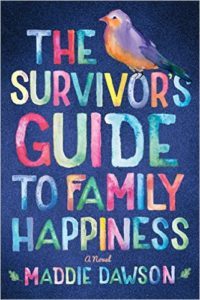
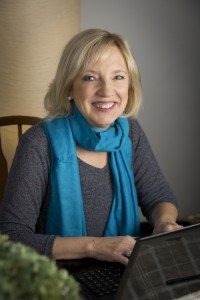
A PopSugar Fall Pick
Chosen as one of the best books of fall by Deep South Magazine
Chosen as one of The Best Books of October by Liz and Lisa
“Maddie Dawson writes a charming story about family in her new novel, The Survivor’s Guide to Family Happiness. Readers are transported back and forth between a mother who gave up her baby for adoption and that daughter’s eventual journey to know the story of her life.” —Associated Press
Maddie Dawson is also Sandi Shelton (all will explained later in the interview!) . As Sandi Shelton, she's the author of What Comes After Crazy, A Piece of Normal, Kissing Games of the World. Maddie Dawson novels include The Opposite of Maybe, The Stuff That Never Happened, and her sublime new novel, The Survivor's Guide to Family Happiness.
I'm thrilled to have Maddie here--she's also a great friend! Thank you, Maddie/Sandi!
I always think that every book begins with a yearning, a desperation to know something. What was haunting you when you started this novel? What question did you want to figure out for yourself, and what answer did the book give you instead?
I love this question, Caroline! I think I’ve always been obsessed with family because I come from one that might be the tiniest bit dysfunctional. Dysfunctional yet hilarious, you know. We’ve pretty much got the DSM-V covered: narcissism, bi-polar disorder, depression, borderline personalities…all the way down to simple garden-variety anxiety. Plus, we’re Southerners, which means that storytelling was installed in our DNA…and God help you if you allow the truth to interfere with a decent punchline!
As a hyper-sensitive, nervous little kid, I sifted through all the stories to try to locate what felt real and true and worth trusting. I am haunted by the notion that we don’t have to be the person our families insist we be—that we are free to walk away, to choose other family members for ourselves. My books seem always to be about making a kind of peace with our first families—a coming of age that takes place long after we’re grown up.
As an adult, I feel lost and estranged from my first family. My parents and siblings are now dead, and because my parents divorced and my mother moved me away from the South when I was 12, I’ve not been raised with the myriad cousins and aunts and uncles I had as a young child. Like Nina in the novel, I long for and fantasize about what it might be like to be part of a huge, great, sprawling mess of a family. Instead, I’ve made my own family—my husband and children and the friends I’ve adopted. And I am happy this way, although I will perhaps always have that vague sense of uprootedness.
What answer did this novel give me? It didn’t do what I’d thought it would do—say that biological family really isn’t all so important after all, and that we are all free to create our own families. Instead, the novel ended up showing me that in some ways most of us yearn for both things, and that we can heal ourselves by looking at and forgiving the limitations of our families (whether adopted or biological) while at the same time creating a posse of supporters, whose love we choose to cherish, and to whom we give our all.
The Survivor's Guide to Family Happiness is so timely--but it digs deeper under the headlines of birth mothers and adoptive ones, to really ask, what makes a family? What's the answer to you?
I love, love, love the idea of modern families—the way that we bond with each other for so many other reasons than the fact that we’re biologically related. Was it always this way? Perhaps, but now it seems that more than ever, it’s love that makes a family—and we all recognize the many different types of families there are.
I have to ask because both the title and the cover are so perfect. How did you come up with the title? Did you have input on the cover, which is just gorgeous?
Thank you so much! I thought of this title when I was contemplating the main character (Nina’s) fantasy that “family happiness” is a static thing--like wealth perhaps--that she can’t figure out how to get for herself. She thinks if she could only locate her birth mother and show her that she never should have been given up for adoption, that she will at last know how to be happy as part of a larger family. Meanwhile, Nina is falling in love with a much older man, the divorced father of two teenagers, and slowly becoming more entrenched and necessary in his family’s life. She doesn’t realize that perhaps this motley crew of misfits, complete with tattoos and piercings and perhaps a little bit of animal activism gone terribly wrong, is what family is all about in the real world.
As for the cover—I feel the same way! My publisher had designers who created three different covers, but this is the one that spoke to me the most. I love the colors and the beautiful font—and of course the bird! I couldn’t be more thrilled.
What's your writing process like? Do you map things out, try to coax the Muse to talk to you?
I do a funny, perhaps neurotic, combination of mapping and coaxing. When the story first lands in my head (usually being told to me by one of the characters, and usually in the middle of the night) I sit down and start writing everything down that I’m being told. It’s a feverish time, and I write pages and pages before I ever really know what’s going to happen, or even if this is a real story. After I have about 20 pages or so, I stop and do the exercises recommended by John Truby in his Anatomy of Story book. Discovering Truby has saved me so much time, because it allows me to figure out all the important things about the track of the story before I get too far in. You can solve story problems and keep yourself from wasting years of your life on a story that really has no solid premise. It makes it a lot more fun!
What's obsessing you now and why? (I know the answer!)
Ha! You do know the answer! I think that one of the weirdest times in life is when a book is completely finished, printed up and ready to go out into the world—and suddenly people (strangers, even!) are reading it and making observations about it, and it’s the oddest sensation to think that these characters that belonged only to you now seem to have taken their place in the world. I am always amazed at the connections readers make that I never thought of, and observations they have about the characters that never would have occurred to me. I tell you, you feel very vulnerable sending these defenseless people out to be judged, with all their flaws and their secrets and their imperfections. You sometimes wish you could have done better for them—but the truth is, by the time they’re heading out, you’re involved with a whole new cast of characters who are busily engaging you, and you’re just as obsessed with these new lives and a whole new set of problems. Right now, my new main character finds herself dabbling in magic, and so I’m reading books of spells. I’m almost ready to start creating potions in the bathtub!
I'm fascinated that you write under a pen name. Why did you decide to do this? Do you feel differently as Maddie?
The pen name actually wasn’t my idea. It came about from the Crown Publishers marketing department before my fourth book came out. They had somehow decided with books one, two and three (all written under the name Sandi Kahn Shelton, which is the real me) that these books were to be marketed as “chick lit.” You may remember chick lit: Bridget Jones and all that. Quirky, funny, romantic comedy books about young women obsessed with weight, great shoes, and with falling in love. My books weren’t quite like that—okay, they weren’t like that at all—my protagonists tended to be older and to perhaps have a bunch of kids and an ex-husband and a difficult mother…but who was I to argue with a marketing department? So when I wrote book #4, The Stuff That Never Happened, and it was about a marriage of 28 years that now seemed to be crashing due to the weight of a long-held secret, the marketing department cried out in alarm: “But this isn’t chick lit! We need to change your name in order to find a whole new audience for you!”
I wasn’t exactly thrilled at first, (hence the name MADDIE), knowing how difficult it was going to be to try to be two people in the world. (Two Facebook accounts, two twitter accounts, two blogs…) But over the past six years, I have to say I’ve realized there’s a kind of freedom in using a different name. I feel more anonymous, freer in a way to write the way I want to write. And as a bonus: my children’s friends don’t necessarily connect Maddie Dawson with my kids’ lives, so I have a lot fewer of those shocked looks when they’ve realized I am a mom who has written a sex scene. (Horrors!)
Published on November 05, 2016 10:31
How was Columbus connected with the Spanish Inquisition? Newton Frohlich's astonishing new novel 1492 delves into The explorer's life, Queen Isabella ousting all Jews from their Spanish homeland, and more.
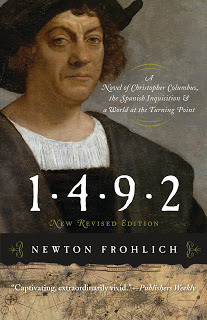
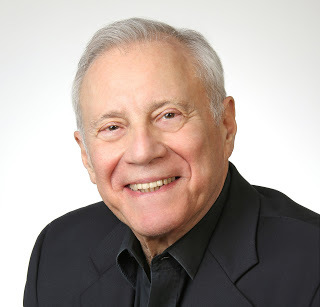
Newton Frohlich is the award-winning author of The Shakespeare Mask: A Novel, as well as 1492: A Novel of Christopher Columbus, the Spanish Inquisition & a World at the Turning Point and Making the Best of It: A Common-Sense Guide to Negotiating a Divorce. A former lawyer in Washington, D.C., he devoted eight years to the research and writing of 1492. He has lived in Washington, D.C., the south of France, and Israel and now makes his home on Cape Cod with his wife, Martha, a musicologist.
Connect with Newton Frohlich on Goodreadsand at http://newtonfrohlich.com/.
I always suspect that every novel begins with something haunting the author. What yearning did"1492" start with?
I noticed that Queen Isabella signed the contract with Columbus about the same time she signed her decree expelling the Jews from Spain after they had lived there over a thousand years. From that question, eight years of research and wiring started. I wondered what was the connection between those two events was, and the answers came to light, one by one.
What was the biggest liberty you took?
I can't think of any liberty I took. The facts were so unusual, I didn't have to make anything up. An interesting, tragic and true story emerged, fact by fact.
What was the whole writing process like for you?
Before work with my editor began, I wrote the four story lines, the Christian, the Moslem, the Jewish, and the Columbus story lines. Following them one after the other, the story unfolded based on my research in Spain, New York and Israel.
"But to say 'the story unfolded' doesn't do justice to what goes on in the mind of an author who spends eight years writing an historical novel. And in my case the story is a bit unusual. When I was a lawyer practicing in Washington, D.C. and decided I was going to "retire" at the age of 36 from the law firm I founded with two others that grew to 16 in the brief period of eight years to write historical novels, one of the first things I did was visit Herman Wouk with whom I had become a friend to ask him what was the professional secret of his success. He wrote Winds of War, The Caine Mutiny, and other books that had been adapted for television and film and I had been impressed by his ability to keep the reader's attention while he carefully delivered the results of his research.
Herman was kind enough to tell me of his approach, which I am pleased to pass along to other writers of historical novels because I find it so useful and true. He said to study the history until I was sure I understood it, then put my notes aside and tell the story from the mouths of my characters.
As I sat in his study in Washington, I saw that all four walls were filled with books he had acquired and read before he wrote about World War II. I understood that for him the process of mastering history was not a casual thing, and I made a vow to follow Herman's rule 1. As for rule 2, after I mastered my historical research, I put my notes aside, chose characters whom I thought would best tell the story and let the narrative flow.
Among my characters was Queen Isabella, the driving force behind the military re-conquest of Spain, the Spanish Inquisition, and the ultimate authority behind Columbus' voyage. So, it was no surprise when my editor told me that a novel is only as good as its villain and Isabella was one of the best villains she'd ever seen. When I heard that, I also Herman Wouk's comments ringing in my ears, so I smiled and said thank you."
What made the turning point of this book so scary?
Indeed, 1492 was a "scary" time. The Spanish Inquisition combined with the Queen's need for money to embark on hundreds of years of spying on people, torturing them and murdering thousands of Jews who converted to Christianity. After they burned them alive at the stake for not being Christian enough, their property was confiscated to finance Queen Isabella's war to reconquer Spain from the Moslems. When the Inquisition wasn't enough, the Queen also expelled Jews who had not converted to Christianity and a thousand years of peaceful residence in Spain ended on 90 days' notice. Into that tragedy stepped Columbus, a Jew whose family converted to Christianity almost a hundred years before.
Then, 525 years later, Spain and Portugal passed laws apologizing for their "mistake" and offering citizenship to the Jews. This unusual event called out for an updated edition of "1492" to emphasize what fear, dictatorship and the exploitation of ignorance can cause if circumstances are exploited to take a wrong turn. If that sounds scary today, then it should. Turning points seem to happen when one least expects them. And as the Spanish-American philosopher George Santayana wrote, "those who do not remember history are condemned to repeat it."
Published on November 05, 2016 10:31
October 27, 2016
A bold, brave, gorgeous graphic novel, BECOMING UNBECOMING, about grappling with rape culture and survival
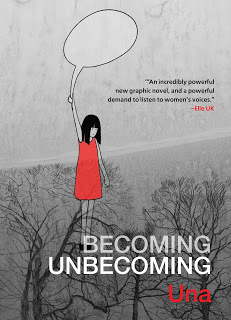
For this post, there is no discussion of the author other than she has produced an unsettling and tremendously important graphic novel about coming to terms with and surviving rape culture. It's an astonishing read and I am honored to promote it.
Reading this graphic novel was one of the most intense experience I've had. How did it feel writing and drawing it? Were there moments where you felt, “I can’t do this?” And if so, what kept you going.
The project started quite slowly so I had a lot of time to adjust. I started doodling fairly randomly and at first didn’t think of it as a book. As it turned into a project, I had a conversation with a feminist academic I knew to discuss why I might embark on a project like this and what the implications might be, and after this, somewhat reassured by her sage advice, I took the drawings to a comics forum in London, Laydeezedocomics, which incidentally also meets in the states, in Chicago and San Francisco. I got a great response from the Laydeezdocomics audience and began to work in earnest on the book. During the next few years I worked slowly, around my other commitments, so I was able to take lots of breaks when it felt too intense. I very much felt “I cant’ do this”from time to time, but mostly, it felt extremely liberating, and I grew in confidence as I worked.
I love the structure of the book and how you varied what we saw—and occasionally added a surprising splash of color. How did that come about?
The varying registers came about primarily because I was experimenting as I drew the book. I had never tried to make a novel length work before, so I learned to make a graphic novel by making one. That said, the way I work is always quite circular. An image might emerge as a result of sitting down to draw, or I might draw something I had already visualized or researched, or sometimes I begin with a line of text that somehow makes me think of a picture, but however I start, the drawing comes from the writing, then the writing comes from the drawing, so it’s a process and the work evolves as it goes. This means it’s always changing. It’s always a response to or a development of what went before.
The color is something I wanted to have because it seemed to pierce the monochrome design in a way that reminded one that this was a story based in fact. There are only tiny moments of color, but they are all crucial to the story and the design. They are not merely decorative, always symbolic or based in memory. The Brownie uniform with the yellow tie, the green double decker bus, and the blue, speculative pencil for the last section of the book.
Your graphic novel isn’t just a pull-you-in-in-indictment of rape culture and how women are shamed. It’s also an exhilarating and powerful call to speak your truth, to refuse the shame, to act to change that culture. Can you speak about that please?
Thank you. I do think it’s important to speak your truth and also I’m interested specifically in the story telling form. Telling a personal story is a powerful thing, and cab be a way of making change. For women and girls who have survived sexual abuse, the phenomenon of being able to speak about this openly is relatively new. However, I think there are a lot of personal story novels around that need, a contest, but don’t have one. I wanted to make a kind of anti0misery novel, so that my story of personal trauma is set against a historical, cultural and political backdrop. The fact my own personal timeline fitted so neatly with the hunt for Peter Sutcliffe, the Yorkshire Ripper, from 1975 to 1981 m is a starting point for this backdrop and of course this particular history plays a significant role in the story, but there are also references to other cases of violence against women and girls and explorations of statistical information. For the Canada US edition, I drew three additional pages that explore cases familiar to North American readers.
Which of the incredible drawings and pages was the most powerful for you?
It’s hard to say really. I love drawing and I get completely lost in the process. I can draw for hours. Some of the drawing was made extremely quickly and some of it took ages, at least partly because I didn’t know what I was doing when I started and had to keep redrawing things. Only one of the drawings was upsetting to make. I won’t say which one. Some details are changed. The mohair/dream sequence is based on an actual recurring nightmare and it was a powerful moment for me to make that into a sequence. More generally, it sometimes takes me a while to get used to a drawing—any drawing, not just the ones that are in the book, so some of the pages that other people find powerful and drawings I didn’t ta first like. In fact there are a few pages in the book that I was hiding in a folder for a while out of embarrassment. Not because of the subject matter but because I thought they were awful. It was only when I returned to them a year or so that I could see their potential.
What’s obsessing you now and why?
I’m obsessed with landscapes and simple forms of architecture because I’m researching for a new book. I’m constantly taking photographs and making sketches, or stopping suddenly in the middle of the street to examine cloud formations. I can’t tell you what the book is going to be about but I can tell you it will have more color in it.
What question didn't’ I ask that I should have.
That is such an interesting question, because I feel that no one ever asked me the right questions when I was young. If they had, I might have found the ability to speak about what was happening to me, and my life might have been very different. These days, though, I answer a lot of questions and I think yours have been rather good ones. I wouldn’t say anything is missing.
Published on October 27, 2016 15:48
October 17, 2016
Author Kristin McCloy talks about her novels Some Girls, Velocity--and wait, there's more! Her mother Lillian McCloy talks about her memoir, Six Car Lengths Behind An Elephant" Undercover and Overwhelmed as a CIA wife and mother
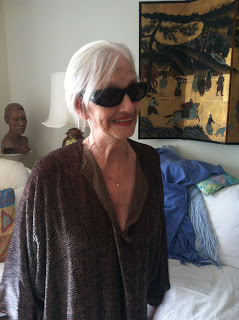 Lillian now
Lillian now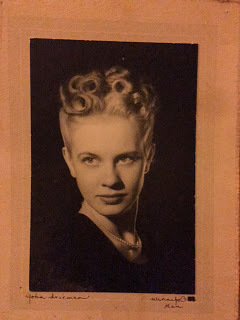 Lillian McCloy as a big band singer
Lillian McCloy as a big band singer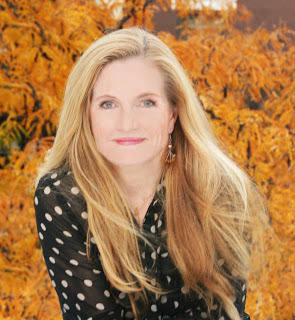 Kristin McCloy
Kristin McCloy 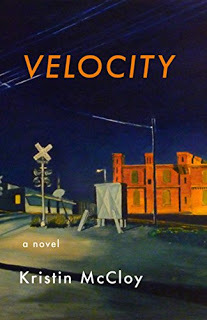
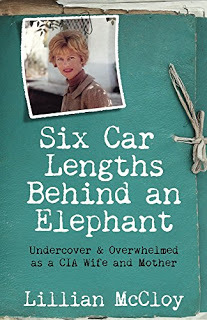
A mother and daughter, both writers, and a sister who created Bordertown publishing! Since I love all things siblings, I couldn't wait to host them.
Lillian McCloy is the author of the memoir Six Car Lengths Behind an Elephant: Undercover & Overwhelmed as a CIA Wife and Mother, which was just published. Kristin McCloy is a critically acclaimed novelist of Velocity, Some Girls and Hollywood Savage. She is currently working on her fourth novel. Kristin McCloy: First, I will give you my mother's answers (as ever, she is the soul of brevity) For easy reference: Lillian McCloy is the author of the memoir Six Car Lengths Behind an Elephant: Undercover & Overwhelmed as a CIA Wife and Mother, which was just published. Kristin McCloy is a critically acclaimed novelist of Velocity, Some Girls and Hollywood Savage. She is currently working on her fourth novel.
I am absolutely delighted to have Lillian and Kristin here. Thank you! (And thank you, Johanna
Caroline: I always think there is a reason to write, something haunting you. What's your reason?
Lillian McCloy: I wanted to do it for Frank [her husband], who, because he was always in deep cover, never got any kind of recognition for the work that he did -- hating the company, who were thankless, and even impairing, but believing deeply in what he was doing. It was also the chance to remember a lot of exciting times in my life, and every day I woke up happy to write.
C: What kind of writer are you? Do you outline? Do you follow the Muse?
L: No, and no. I just wrote.
C: Was it difficult to write a memoir? Was there ever any point where you thought, if I write this, someone is going to think that?
L: No, I wasn't out to expose anyone. It was my way of recognizing Frank. That was really my focus.
C: What's obsessing you now and why?
L: My teeth. I'm 90 years old and just had dental surgery. Otherwise, really nothing obsesses me except my bowels. (Huge laugh).
C: What question didn't I ask that I should have?
L: Ahhh...well, I really didn't want it to read as a self-pitying book. I wanted to focus more on the adventure of it all.
Kristin: Let me describe my mother. She’s a petite 5'2" formidable Viking force of nature -- in fact my Dad called her Thor -- her middle name, as she's Icelandic, is Thorbjorg -- and she often called him Paco, which is slang for Francisco, my father's name translated into Spanish. My mother is very blond (now her hair is white). she kept it cut vey cute to her shoulders, wore extremely chic clothes, stilettoes .When she met my dad, she worked as Melvin Belli’s executive secretary, and the first thing she had to do every morning was give his parrot an ounce of bourbon. 'He was very cranky otherwise.'
This book has done a lot for my dispirited 90-yr-old very-wits(both)-about-her mother - it's kickstarted her capacity for joie de vivre, and it's a gorgeous thing to hear.
Caroline: Kristin this is for you now. I always think there is a reason to write, something haunting you. What's your reason?
K: I absolutely agree. Something haunting me is the reason I write the book. If I could sum it up in one paragraph, I'd just write a brief essay. The struggle through the thickets of consciousness, sub-consciousness and the dreamland of unconsciousness is why I write; there is something, some answer, I am trying to achieve, or completely explore.
In Velocity, it was the wild but perfectly, as I saw it, logical connection of grief to sexual obsession. It was a way this particular young woman dealt with the loss of her mother, and along with that, the loss of her capacity to communicate with her father. It's about authority, the need for it, the defiance of it, and all the old wounds of adolescence. It's about doing anything except feel the pain of death – or being orphaned. It's also about the realms of worlds that have always existed around you/one/her as a child . . .it's about going home and finding it utterly foreign; it's about risk over security, breaking rather than keeping the rules, about sexuality that in a flash seems to steal your soul, body first. Of building a world of illusion and wanting to literally die when it crumbles. And for me as a first-time novelist, the challenge was to write with equal force about the terrifying nihilism of death, of losing one's mother, and the crazed pull to sex – to write about sex graphically without ever veering into the porno-.
For Some Girls, it was about trying to understand how it is that we learn to be women by studying the way other women become so – mothers, sisters, friends, and finally, lovers. It was about the romance that only women can make when they're together, and the fluidity of gender (this was waaaay back in the Dark Ages of 1989, Manhattan), the terror of seeing oneself in a way one never would have imagined, the struggle to assimilate new aspects of one's being – and one's sexual identity is the cornerstone I also wanted to write about the way only women can appreciate certain other women's beauty, and most of all, how one becomes captivated by a singular intelligence, sensuality, and soul. How deep that attraction goes.
It is also, crucially, my love letter to Manhattan; once I got it all down on paper, there was this sense: I can rest now.
And with Hollywood Savage I wanted to explore the theme of fidelity and in/ from the male point of view, for reasons that made complete autobiographical sense to me. I wanted to write about Hollywood and its delirious illogic, its addiction to cliché, creative run by bureaucrats, and the difficulty of converting novel to script.
It was a contrast between cities, and an absolute exploration (along the lines, if I can be so pretentious, of Proust's The Captive) of passion, jealousy, the need to hold, to have, to keep. It's about the humiliation of having someone else seduce your Other, and the weird need for revenge; and it was about two very different women who nevertheless have a whole world (and one man) in common.
Always I seem to feel the need to look at/describe/outline New York. In the first book, it's about a girl who left to find herself, did, then came back home, very briefly, for a life-changing summer in North Carolina. In Some Girls it's about a young woman's flight to NYC to become someone more like her next door neighbor, and in Hollywood Savage it's about living on the other end of the country and looking back, with extreme homesickness, at the place you finally, with great effort, made your own.
I miss New York could be the name of all my books, I sometimes think (but – NAH).
C: What kind of writer are you?
K: I don't outline unless I get lost in the morass (see: work in progress). I crave the Muse, love Elizabeth Gilbert's take on it, pray to James Salter for help, and read his work along with Amy Hempel's and Don DeLillo's and Antoine St. Exupery's and Jayne Anne Phillips (though mostly only her short stories), Joy Williams' earlier work, Michael Ondaatje and Marguerite Duras for inspiration when I feel I'm just going through the motions.
C: What question didn't I ask that I should have?
K: Only this: why is it that people will ascribe 'James Salter' –like qualities to male writers simply because they write about men and women, but never see his influence in any women??
Published on October 17, 2016 19:02
Jewelry! The amazing Kelle Cross shows off some of her designs and talks about the creative process--and how she likes her coffee
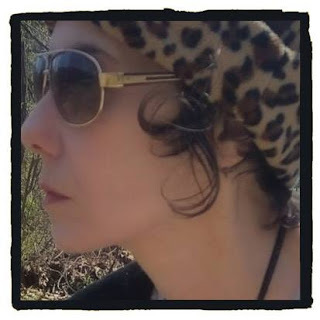 KELLE CROSS
KELLE CROSS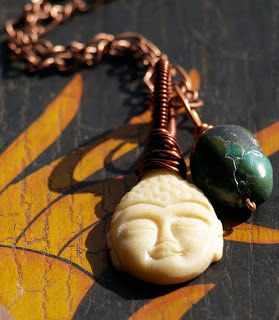
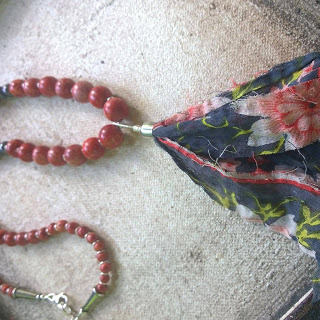
Oh yes, every once in a while, I want to branch out and talk to people who do other creative things. This time, it's jewelry, and the extraordinarily talented Kelle Cross, of Venus Envy Bijoux. These designs are completely gorgeous. Thank you so much for being here, Kelle.
How did you get interested in jewelry and who did you make the dream of doing it a reality?
Apparently it’s a family thing. I have rocks and metal in my blood. A couple of family members are or were metal smiths. My father took me to rock shops when I was small. He made jewelry from old coins. Fast forward to the late nineties. I was working for a very fashion forward boutique in Houston, traveling to New York. I was seeing jewelry I loved but couldn’t afford. So I began to teach myself. That same boutique sold my work. At the time, very dainty rosary chain styles. Remember “Y” necklaces? Melrose Place? Like that. (Laughing). I’ve been very spoiled that my work has always been in a boutique or gallery because I was also working there.
I am gobsmacked by your designs, especially the ones with fabric. How did you think of that? And how do most of your ideas come to you?
Thank you. The fabric pieces were a happy accident. I inherited a bag of fabric scraps that were too lovely to just throw away. Tassels were popular so I thought it was a natural thing to do. It was a very organic thing. Ideas come to me when I am doing something else. My brain tries to figure it out, over and over so that when I do actually make the design it’s like I already did a few times. This was especially true when I was sick. I had horrible insomnia. I tried to make it creative time.
Which brings us to the creative process. How do work? Do you have rituals? A set time?
Ah, now here is where I am supposed to make you believe my process is full of Instagram worthy vignettes. It is not. (Laughing.) I get up, have some coffee, check my email, social media sites and storefront. Then I take care of the cats. Do the breakfast dishes. Then I get to work. And because this is a one woman show, that might be making jewelry. Or it might be taking photos, packing orders and making a post office run.
Making tassels is an assembly line process. The scraps are four layers thick and quilted together. I have to pull the layers apart and pull out the loose threads. Next they are sorted by color. This is when they start “talking” to me. Colors or patterns will grab my eye. Wire wraps are more mathematical. And what people are calling my “Spirit Necklaces”, are all intuition. For those I need a little quiet and to just step out of the way so the design can just become.
Because I have mostly made jewelry in and for a retail environment, I am very good at making on the fly. For the better part of twelve years I stood at a workbench and put together custom designs while the customer waited.
What don't we know about you that we should know?
I am very grateful to be able to do something I love. Especially when I get to do it for people I love.
What's obsessing you now and why?
Things that need to be packed and mailed. We live in an Amazon world and buyer’s expectations are high.
What question didn't I ask that I should have?
How I take my coffee. (Creamy and sweet).
Published on October 17, 2016 19:02
October 15, 2016
Jodi Picoult talks about racism, writing and SMALL GREAT THINGS
<!-- /* Font Definitions */ @font-face {font-family:Wingdings; panose-1:5 0 0 0 0 0 0 0 0 0; mso-font-charset:2; mso-generic-font-family:auto; mso-font-pitch:variable; mso-font-signature:0 268435456 0 0 -2147483648 0;} @font-face {font-family:"MS 明朝"; mso-font-charset:78; mso-generic-font-family:auto; mso-font-pitch:variable; mso-font-signature:-536870145 1791491579 18 0 131231 0;} @font-face {font-family:"Cambria Math"; panose-1:2 4 5 3 5 4 6 3 2 4; mso-font-charset:0; mso-generic-font-family:auto; mso-font-pitch:variable; mso-font-signature:-536870145 1107305727 0 0 415 0;} @font-face {font-family:Calibri; panose-1:2 15 5 2 2 2 4 3 2 4; mso-font-charset:0; mso-generic-font-family:auto; mso-font-pitch:variable; mso-font-signature:-520092929 1073786111 9 0 415 0;} @font-face {font-family:Cambria; panose-1:2 4 5 3 5 4 6 3 2 4; mso-font-charset:0; mso-generic-font-family:auto; mso-font-pitch:variable; mso-font-signature:-536870145 1073743103 0 0 415 0;} /* Style Definitions */ p.MsoNormal, li.MsoNormal, div.MsoNormal {mso-style-unhide:no; mso-style-qformat:yes; mso-style-parent:""; margin:0in; margin-bottom:.0001pt; mso-pagination:widow-orphan; font-size:12.0pt; font-family:Cambria; mso-ascii-font-family:Cambria; mso-ascii-theme-font:minor-latin; mso-fareast-font-family:"MS 明朝"; mso-fareast-theme-font:minor-fareast; mso-hansi-font-family:Cambria; mso-hansi-theme-font:minor-latin; mso-bidi-font-family:"Times New Roman"; mso-bidi-theme-font:minor-bidi;} p.MsoListParagraph, li.MsoListParagraph, div.MsoListParagraph {mso-style-priority:34; mso-style-unhide:no; mso-style-qformat:yes; margin-top:0in; margin-right:0in; margin-bottom:0in; margin-left:.5in; margin-bottom:.0001pt; mso-add-space:auto; mso-pagination:widow-orphan; font-size:12.0pt; font-family:Cambria; mso-ascii-font-family:Cambria; mso-ascii-theme-font:minor-latin; mso-fareast-font-family:"MS 明朝"; mso-fareast-theme-font:minor-fareast; mso-hansi-font-family:Cambria; mso-hansi-theme-font:minor-latin; mso-bidi-font-family:"Times New Roman"; mso-bidi-theme-font:minor-bidi;} p.MsoListParagraphCxSpFirst, li.MsoListParagraphCxSpFirst, div.MsoListParagraphCxSpFirst {mso-style-priority:34; mso-style-unhide:no; mso-style-qformat:yes; mso-style-type:export-only; margin-top:0in; margin-right:0in; margin-bottom:0in; margin-left:.5in; margin-bottom:.0001pt; mso-add-space:auto; mso-pagination:widow-orphan; font-size:12.0pt; font-family:Cambria; mso-ascii-font-family:Cambria; mso-ascii-theme-font:minor-latin; mso-fareast-font-family:"MS 明朝"; mso-fareast-theme-font:minor-fareast; mso-hansi-font-family:Cambria; mso-hansi-theme-font:minor-latin; mso-bidi-font-family:"Times New Roman"; mso-bidi-theme-font:minor-bidi;} p.MsoListParagraphCxSpMiddle, li.MsoListParagraphCxSpMiddle, div.MsoListParagraphCxSpMiddle {mso-style-priority:34; mso-style-unhide:no; mso-style-qformat:yes; mso-style-type:export-only; margin-top:0in; margin-right:0in; margin-bottom:0in; margin-left:.5in; margin-bottom:.0001pt; mso-add-space:auto; mso-pagination:widow-orphan; font-size:12.0pt; font-family:Cambria; mso-ascii-font-family:Cambria; mso-ascii-theme-font:minor-latin; mso-fareast-font-family:"MS 明朝"; mso-fareast-theme-font:minor-fareast; mso-hansi-font-family:Cambria; mso-hansi-theme-font:minor-latin; mso-bidi-font-family:"Times New Roman"; mso-bidi-theme-font:minor-bidi;} p.MsoListParagraphCxSpLast, li.MsoListParagraphCxSpLast, div.MsoListParagraphCxSpLast {mso-style-priority:34; mso-style-unhide:no; mso-style-qformat:yes; mso-style-type:export-only; margin-top:0in; margin-right:0in; margin-bottom:0in; margin-left:.5in; margin-bottom:.0001pt; mso-add-space:auto; mso-pagination:widow-orphan; font-size:12.0pt; font-family:Cambria; mso-ascii-font-family:Cambria; mso-ascii-theme-font:minor-latin; mso-fareast-font-family:"MS 明朝"; mso-fareast-theme-font:minor-fareast; mso-hansi-font-family:Cambria; mso-hansi-theme-font:minor-latin; mso-bidi-font-family:"Times New Roman"; mso-bidi-theme-font:minor-bidi;} .MsoChpDefault {mso-style-type:export-only; mso-default-props:yes; font-family:Cambria; mso-ascii-font-family:Cambria; mso-ascii-theme-font:minor-latin; mso-fareast-font-family:"MS 明朝"; mso-fareast-theme-font:minor-fareast; mso-hansi-font-family:Cambria; mso-hansi-theme-font:minor-latin; mso-bidi-font-family:"Times New Roman"; mso-bidi-theme-font:minor-bidi;} @page WordSection1 {size:8.5in 11.0in; margin:1.0in 1.25in 1.0in 1.25in; mso-header-margin:.5in; mso-footer-margin:.5in; mso-paper-source:0;} div.WordSection1 {page:WordSection1;} /* List Definitions */ @list l0 {mso-list-id:1295141860; mso-list-type:hybrid; mso-list-template-ids:1642479674 67698703 67698713 67698715 67698703 67698713 67698715 67698703 67698713 67698715;} @list l0:level1 {mso-level-tab-stop:none; mso-level-number-position:left; text-indent:-.25in;} @list l0:level2 {mso-level-number-format:alpha-lower; mso-level-tab-stop:none; mso-level-number-position:left; text-indent:-.25in;} @list l0:level3 {mso-level-number-format:roman-lower; mso-level-tab-stop:none; mso-level-number-position:right; text-indent:-9.0pt;} @list l0:level4 {mso-level-tab-stop:none; mso-level-number-position:left; text-indent:-.25in;} @list l0:level5 {mso-level-number-format:alpha-lower; mso-level-tab-stop:none; mso-level-number-position:left; text-indent:-.25in;} @list l0:level6 {mso-level-number-format:roman-lower; mso-level-tab-stop:none; mso-level-number-position:right; text-indent:-9.0pt;} @list l0:level7 {mso-level-tab-stop:none; mso-level-number-position:left; text-indent:-.25in;} @list l0:level8 {mso-level-number-format:alpha-lower; mso-level-tab-stop:none; mso-level-number-position:left; text-indent:-.25in;} @list l0:level9 {mso-level-number-format:roman-lower; mso-level-tab-stop:none; mso-level-number-position:right; text-indent:-9.0pt;} ol {margin-bottom:0in;} ul {margin-bottom:0in;} </style> <br /><div class="MsoNormal"><br /><br /><div class="separator" style="clear: both; text-align: center;"><b><a href="https://3.bp.blogspot.com/-kTX20Tkix8..." imageanchor="1" style="margin-left: 1em; margin-right: 1em;"><img border="0" height="320" src="https://3.bp.blogspot.com/-kTX20Tkix8..." width="214" /></a></b></div><br /><br /><br /><div class="separator" style="clear: both; text-align: center;"><b><a href="https://2.bp.blogspot.com/-l6MriFYy8t..." imageanchor="1" style="margin-left: 1em; margin-right: 1em;"><img border="0" height="320" src="https://2.bp.blogspot.com/-l6MriFYy8t..." width="214" /></a></b></div><br />Racism. Time. Justice. Jodi Picoult really needs no bio (unless you've just arrived from the planet Jupiter). Her new novel SMALL GREAT THINGS is her most controversial--and perhaps, her greatest. I'm honored to have her here to talk about it. Thank you, Jodi!<br /><br /><b>Why write a book about racism? (I know why, but I want you to tell it.) And why was this one of the hardest books you have ever written?</b></div><div class="MsoNormal"><br /></div><div class="MsoNormal" style="mso-layout-grid-align: none; mso-pagination: none; text-autospace: none;">It’s a topic that weighs heavily on the hearts of people in this country – and heavily on my heart<span style="mso-bidi-font-family: Calibri;">. <span style="mso-spacerun: yes;"> </span>But most white people have no idea how to talk about it.<span style="mso-spacerun: yes;"> </span>It’s very easy to make a mistake when we talk about racism – or to unintentionally offend someone.<span style="mso-spacerun: yes;"> </span>And so, as a result, white people often don’t talk about it at all. <span style="mso-spacerun: yes;"> </span></span>For example, I had been trying to write a book about racism for 20 years, but couldn’t figure out how to do it.<span style="mso-spacerun: yes;"> </span><span style="mso-bidi-font-family: Calibri;">I kept asking myself: why do I have the right to write it?<span style="mso-spacerun: yes;"> </span>I grew up white and privileged.<span style="mso-spacerun: yes;"> </span>True, I do research.<span style="mso-spacerun: yes;"> </span>True, I’ve written about many kinds of people I’m not:<span style="mso-spacerun: yes;"> </span>rape victims, cancer patients, school shooters, men – but racism is different.<span style="mso-spacerun: yes;"> </span>The answer came in realizing who my audience was.<span style="mso-spacerun: yes;"> </span>Yes, I hope people of color read the book and find it resonant.<span style="mso-spacerun: yes;"> </span>But I really am reaching out to white people who - like me, like many of my friends - would never think of themselves as racists – but need to think a little harder. Part of my research involved attending social justice workshops and leaving in tears every night as I came to see that I was not nearly as blameless as I thought I was.<span style="mso-spacerun: yes;"> </span>I was pretty blissfully ignorant about racism before I began this book, because I had the luxury of being ignorant.<span style="mso-spacerun: yes;"> </span>Now I can’t NOT see race, and I can’t stop discussing it. </span></div><div class="MsoNormal" style="mso-layout-grid-align: none; mso-pagination: none; text-autospace: none; text-indent: .5in;"><br /></div><div class="MsoNormal"><b>What surprised you in the writing of this novel? Sometimes I feel that I don’t know what I am writing about until I’ve finished a draft. Is it this way with you?</b></div><div class="MsoNormal"><br /></div><div class="MsoNormal" style="mso-layout-grid-align: none; mso-pagination: none; text-autospace: none;">Two things.<span style="mso-spacerun: yes;"> </span>First, <span style="mso-bidi-font-family: Calibri;">racism is often incorrectly defined as individual prejudice.<span style="mso-spacerun: yes;"> </span>Yet we could take every Skinhead and ship them off to Mars and there would still be racism. That’s because racism is power PLUS prejudice.<span style="mso-spacerun: yes;"> </span>Although it’s easy to see the headwinds of racism – the ways that the color of one’s skin makes it hard for some people to achieve success – there are also tailwinds of racism.<span style="mso-spacerun: yes;"> </span>Being white gives us advantages that we prefer to chalk up to hard work or luck.<span style="mso-spacerun: yes;"> </span>In other words – if you were lucky enough to be born white, part of what you achieve is as a direct result of what someone else did not because he was born black.<span style="mso-spacerun: yes;"> </span>And that, as a white person in America, is very hard for people to accept or wrap their heads around.<span style="mso-spacerun: yes;"> </span>Second, that you CAN learn not to hate.<span style="mso-spacerun: yes;"> </span>I interviewed two former Skinheads who have renounced the movement, and who acknowledge that even though they still feel anger, they have learned how to channel that anger so that it isn’t targeted at a scapegoat.<span style="mso-spacerun: yes;"> </span>One is married to a Jewish woman now; the other helps the federal government find cells of white supremacists that are active on the internet or are stockpiling weapons in rural places for a “Holy Race War.”<span style="mso-spacerun: yes;"> </span>So much of their anger came from it being easier to blame someone else for the status of their lives rather than to blame themselves – and now they have taken ownership of those feelings, have worked hard to correct them, and they actively try to foster harmony rather than hatred.<span style="mso-spacerun: yes;"> </span>Given the state of today’s current politics, I can’t help but think there are a lot of people who might learn from this.</span></div><div class="MsoNormal"><br /></div><div class="MsoNormal"><b>Can you talk about the title, Small Great Things? I absolutely love it.</b></div><div class="MsoNormal"><br /></div><div class="MsoNormal" style="mso-layout-grid-align: none; mso-pagination: none; text-autospace: none;">It comes from quote often attributed to Dr. Martin Luther King, Jr. :<span style="mso-spacerun: yes;"> </span>“If I cannot do great things, I can do small things in a great way.” <span style="mso-bidi-font-family: Calibri;">For many white people, MLK is the first stepping stone to understanding racial struggles, and I wanted to honor that.<span style="mso-spacerun: yes;"> </span>But I also believe that although racism is institutional and systemic, it’s both perpetuated and dismantled through individual acts.<span style="mso-spacerun: yes;"> </span>Small great things.<span style="mso-spacerun: yes;"> </span>We can’t individually change the world but we can change ourselves and our behaviors.</span><span style="font-family: "calibri"; font-size: 15.0pt;"></span></div><div class="MsoNormal"><br /></div><div class="MsoNormal"><b><br /></b></div><div class="MsoNormal"><b>You’re known for researching every last detail. Was there anything unexpected that you found? And did it change the trajectory of your novel?</b></div><div class="MsoNormal"><br /></div><div class="MsoNormal">Everything I learned was a revelation for me, and part of my own journey to understanding my relationship to racism and how, unwittingly, I might have contributed to it.<span style="mso-spacerun: yes;"> </span>I remember one woman of color telling me how shocked she was when she saw a white woman in a grocery store open a bag of chips and give a few to her kid before paying for it.<span style="mso-spacerun: yes;"> </span>Although I was sure the woman was planning to pay for it, the woman I was interviewing said that a Black woman wouldn’t be given the benefit of the doubt.<span style="mso-spacerun: yes;"> </span>The other AHA moment I had was when I admitted that sometimes, I felt slighted if I said hello to a Black man on an elevator or at a street crossing and he didn’t respond in kind.<span style="mso-spacerun: yes;"> </span>It took talking to people of color to make me realize that I had unconsciously made this “all about me” when in fact it was about 200 years of systemic racism.<span style="mso-spacerun: yes;"> </span>It wasn’t all that long ago when a Black man who spoke to a white woman could be beaten or hanged for doing so.<br /><br /><b>What do you want people to come away with from this novel?</b></div><div class="MsoNormal"><br /></div><div class="MsoNormal"><span style="mso-bidi-font-family: Calibri;">I am so lucky to have a podium of sorts after 20 years.<span style="mso-spacerun: yes;"> </span>I have amazing fans who will go with me, no matter where I choose to take them.<span style="mso-spacerun: yes;"> </span>You cannot turn on the news today without knowing that a conversation about race is not just timely, but critical.<span style="mso-spacerun: yes;"> </span>I hope that for those who don’t quite know how to start talking, this book can be a springboard for further discussion.<span style="mso-spacerun: yes;"> </span>And I REALLY hope that they read it before the next presidential election.</span></div><div class="MsoNormal"><br /></div><div class="MsoNormal"><b>I want to ask, if you could go back to young, young Jodi, before you had published anything at all, what advice would you give yourself and why?</b></div><div class="MsoNormal"><br /></div><div class="MsoNormal">Trust yourself.<span style="mso-spacerun: yes;"> </span>I never really believed that I would be published, or that anyone would want to read the kind of stuff I wanted to write.<span style="mso-spacerun: yes;"> </span>That is not to say my career has been easy, but it certainly has been more successful than I ever imagined it could be.<span style="mso-spacerun: yes;"> </span></div><div class="MsoNormal"><b><br /></b><b>What’s obsessing you now and why?</b></div><div class="MsoNormal">I’m working with my daughter and co-writer, Samantha van Leer, to turn our YA novel BETWEEN THE LINES into a musical, hopefully bound for Broadway.<span style="mso-spacerun: yes;"> </span>It’s been two years of hard, wonderful work.<span style="mso-spacerun: yes;"> </span>Our Tony award-winning producer brought Kinky Boots to Broadway; our director was nominated for a Tony for Newsies; our creative team is fresh and breathtaking and collaborative.<span style="mso-spacerun: yes;"> </span>We just did a week of development at NY Stage and Film and received a standing ovation. Later, a woman came up to our book writer and said she had a subscription to this summer theater series for 20 years and had only seen one other standing ovation.<span style="mso-spacerun: yes;"> </span>It was for Hamilton.<span style="mso-spacerun: yes;"> </span><span style="font-family: "wingdings"; mso-ascii-font-family: Cambria; mso-ascii-theme-font: minor-latin; mso-char-type: symbol; mso-hansi-font-family: Cambria; mso-hansi-theme-font: minor-latin; mso-symbol-font-family: Wingdings;"><span style="mso-char-type: symbol; mso-symbol-font-family: Wingdings;">J</span></span><br /><br /><b>What question didn’t I ask that I should have?</b></div><div class="MsoNormal"><br /></div><div class="MsoListParagraphCxSpFirst" style="mso-list: l0 level1 lfo1; text-indent: -.25in;"><span style="mso-bidi-font-family: Cambria; mso-bidi-theme-font: minor-latin; mso-fareast-font-family: Cambria; mso-fareast-theme-font: minor-latin;"><span style="mso-list: Ignore;">1.<span style="font: 7.0pt "Times New Roman";"> </span></span></span>What can I do, as a white person, to take steps toward being more conscious of social justice?<span style="mso-spacerun: yes;"> </span></div><div class="MsoListParagraphCxSpMiddle"><br /></div><div class="MsoListParagraphCxSpLast">I break these into Do’s and Don’ts.<span style="mso-spacerun: yes;"> </span>DON’T say “I’m colorblind.”<span style="mso-spacerun: yes;"> </span>It suggests that you don’t care or recognize race.<span style="mso-spacerun: yes;"> </span>DON’T say, “I’m Jewish/gay/female/disabled and have faced oppression too.”<span style="mso-spacerun: yes;"> </span>It again undercuts the struggle of people of color by bringing the focus back to you.<span style="mso-spacerun: yes;"> </span>DON’T assume you have to be present at all conversations about racism.<span style="mso-spacerun: yes;"> </span>There are times when it’s much more important to talk to “your own” – namely, white people. DON’T say “I have Black friends!”<span style="mso-spacerun: yes;"> </span>Have you talked to these Black friends about racism?<span style="mso-spacerun: yes;"> </span>Because if you haven’t they’re not really friends.<span style="mso-spacerun: yes;"> </span>DON’T try to be a savior – it’s not up to you to “fix” Black communities; they have wonderful strong leaders and voices.<span style="mso-spacerun: yes;"> </span>Instead of saying, “I can help you, “ say, “Do you need help?<span style="mso-spacerun: yes;"> </span>What kind?”<span style="mso-spacerun: yes;"> </span>DON’T say “All lives matter.”<span style="mso-spacerun: yes;"> </span>Of course they do, but ALL lives can’t matter until the ones that are currently being undervalued or threatened are equal and important.<span style="mso-spacerun: yes;"> </span>It’s like going to the doctor with a broken arm and having him say, “Well, all bones matter.”<span style="mso-spacerun: yes;"> </span>True – but wouldn’t you rather have a cast on the broken one?<span style="mso-spacerun: yes;"> </span>DO understand that there is a difference between Equal and Equitable.<span style="mso-spacerun: yes;"> </span>Equal means the same, equitable means fair.<span style="mso-spacerun: yes;"> </span>If you had a blind student in class would you give him the same test as everyone else, or a Braille one with the same information?<span style="mso-spacerun: yes;"> </span>“Equitable” recognizes that there are obstacles and challenges faced by people of color that white people do not face, and thus a fair path to success for these two groups may look slightly different.<span style="mso-spacerun: yes;"> </span>DO educate yourself.<span style="mso-spacerun: yes;"> </span>Sure, you know who MLK Jr. was.<span style="mso-spacerun: yes;"> </span>But do you know who Lewis Latimer was?<span style="mso-spacerun: yes;"> </span>Bill Pickett?<span style="mso-spacerun: yes;"> </span>Henry Ossian Flipper? <span style="mso-spacerun: yes;"> </span>DO make yourself uneasy – put yourself into situations where you are not part of the majority.<span style="mso-spacerun: yes;"> </span>Feeling comfortable is not a right, it’s a privilege.<span style="mso-spacerun: yes;"> </span>DO recognize those tailwinds of privilege you have – if you think a person of color is being ignored in a meeting, ask the moderator if you might hear from someone who hasn’t spoken yet.<span style="mso-spacerun: yes;"> </span>If your uncle cracks a racist joke at Christmas, take him to task.<span style="mso-spacerun: yes;"> </span>DO talk to other people about racism – even when there’s no person of color present.<span style="mso-spacerun: yes;"> </span>Part of white privilege is having access to places and conversations people of color don’t – and that’s exactly where we need to start talking about racism and the white person’s role in it.<span style="mso-spacerun: yes;"> </span>DO read widely.<span style="mso-spacerun: yes;"> </span>One very easy step you can take toward racial justice is to look at your bookshelf and see how frequently you read an author of color.<span style="mso-spacerun: yes;"> </span>For every white writer whose book you pick up, try another by an author of color:<span style="mso-spacerun: yes;"> </span>Colson Whitehead, Toni Morrison, Octavia Butler, Ellen Oh, Ta-Nehesi Coates, Sherman Alexie, Sandra Cisneros, Kazuo Ishiguro, Jesmyn Ward, Khaled Hosseini, Lisa See, Christina Henriquez, Nnedi Okurafor, Jacqueline Woodson, Roxane Gay, Cynthia Bond, Helen Oyeyemi, Junot Diaz, Laura Esquivel, Julia Alvarez, Marie Lu, Celeste Ng, Nicola Yoon, Jason Reynolds, Sabaa Tahir, Shonda Rhimes, Issa Rae, Tracy K. Smith, Chimamanda Ngozi Adichie, Zadie Smith, Walter Mosley, Edwidge Danticat, Maya Angelou, Gloria Naylor, Alice Walker, Amy Tan, Jhumpa Lahiri, Chang-Rae Lee, Jenny Han, Gabrielle Zavin, Kevin Kwan…shall I go on?</div><div class="MsoNormal"><br /></div><div class="MsoListParagraphCxSpFirst" style="mso-list: l0 level1 lfo1; text-indent: -.25in;"><span style="mso-bidi-font-family: Cambria; mso-bidi-theme-font: minor-latin; mso-fareast-font-family: Cambria; mso-fareast-theme-font: minor-latin;"><span style="mso-list: Ignore;">2.<span style="font: 7.0pt "Times New Roman";"> </span></span></span>WHO’S THE BEST NEW AUTHOR I HAVEN’T HEARD OF YET?</div><div class="MsoListParagraphCxSpLast"><br /></div><div class="MsoNormal" style="margin-left: .25in;">Nicola Yoon.<span style="mso-spacerun: yes;"> </span>She writes YA fiction and takes my breath away with every other damn sentence.<span style="mso-spacerun: yes;"> </span></div><div class="MsoNormal"><br /></div>
Published on October 15, 2016 18:43
Love, mystery and ghosts: Stephanie Gangi talks about her extraordinary new novel THE NEXT
<!-- /* Font Definitions */ @font-face {font-family:Arial; panose-1:2 11 6 4 2 2 2 2 2 4; mso-font-charset:0; mso-generic-font-family:auto; mso-font-pitch:variable; mso-font-signature:-536859905 -1073711037 9 0 511 0;} @font-face {font-family:Times; panose-1:2 0 5 0 0 0 0 0 0 0; mso-font-alt:Times; mso-font-charset:0; mso-generic-font-family:auto; mso-font-pitch:variable; mso-font-signature:3 0 0 0 1 0;} @font-face {font-family:"MS 明朝"; mso-font-charset:78; mso-generic-font-family:auto; mso-font-pitch:variable; mso-font-signature:-536870145 1791491579 18 0 131231 0;} @font-face {font-family:"Cambria Math"; panose-1:2 4 5 3 5 4 6 3 2 4; mso-font-charset:0; mso-generic-font-family:auto; mso-font-pitch:variable; mso-font-signature:-536870145 1107305727 0 0 415 0;} @font-face {font-family:Cambria; panose-1:2 4 5 3 5 4 6 3 2 4; mso-font-alt:Cambria; mso-font-charset:0; mso-generic-font-family:auto; mso-font-pitch:variable; mso-font-signature:-536870145 1073743103 0 0 415 0;} /* Style Definitions */ p.MsoNormal, li.MsoNormal, div.MsoNormal {mso-style-unhide:no; mso-style-qformat:yes; mso-style-parent:""; margin:0in; margin-bottom:.0001pt; mso-pagination:widow-orphan; font-size:12.0pt; font-family:Cambria; mso-ascii-font-family:Cambria; mso-ascii-theme-font:minor-latin; mso-fareast-font-family:"MS 明朝"; mso-fareast-theme-font:minor-fareast; mso-hansi-font-family:Cambria; mso-hansi-theme-font:minor-latin; mso-bidi-font-family:"Times New Roman"; mso-bidi-theme-font:minor-bidi;} .MsoChpDefault {mso-style-type:export-only; mso-default-props:yes; font-family:Cambria; mso-ascii-font-family:Cambria; mso-ascii-theme-font:minor-latin; mso-fareast-font-family:"MS 明朝"; mso-fareast-theme-font:minor-fareast; mso-hansi-font-family:Cambria; mso-hansi-theme-font:minor-latin; mso-bidi-font-family:"Times New Roman"; mso-bidi-theme-font:minor-bidi;} @page WordSection1 {size:8.5in 11.0in; margin:1.0in 1.25in 1.0in 1.25in; mso-header-margin:.5in; mso-footer-margin:.5in; mso-paper-source:0;} div.WordSection1 {page:WordSection1;} </style> <br /><div class="separator" style="clear: both; text-align: center;"></div><div class="separator" style="clear: both; text-align: center;"></div><div class="separator" style="clear: both; text-align: center;"><a href="https://1.bp.blogspot.com/-dBSb69vNGt..." imageanchor="1" style="margin-left: 1em; margin-right: 1em;"><img border="0" height="240" src="https://1.bp.blogspot.com/-dBSb69vNGt..." width="320" /></a></div><div class="MsoNormal"><div class="separator" style="clear: both; text-align: center;"><a href="https://2.bp.blogspot.com/-vb98ni_c3_..." imageanchor="1" style="margin-left: 1em; margin-right: 1em;"><img border="0" height="320" src="https://2.bp.blogspot.com/-vb98ni_c3_..." width="211" /></a></div><span style="font-family: "times"; font-size: 10.0pt;"><br /></span><b style="mso-bidi-font-weight: normal;"><span style="background: white; color: #222222; font-family: "arial"; font-size: 9.5pt;">I'm always partial to debuts, and this one, THE NEXT by <a href="http://www.sgangi.com/">Steph... Gangi </a>is gorgeously written, haunting and it's also an INDIE NEXT PICK! I'm absolutely thrilled to host Stephanie on the blog and to see al the rave reviews rolling in! Thank you, Stephanie!</span></b><br /><br /><br /><b style="mso-bidi-font-weight: normal;"><span style="background: white; color: #222222; font-family: "arial"; font-size: 9.5pt;"> I absolutely love books like this--the drifting of the character between one world and the next. What jumpstarted this novel? What was haunting you that you felt you had to write about it?</span></b></div><div class="MsoNormal"><br /></div><div class="MsoNormal"><span style="background: white; color: #222222; font-family: "arial"; font-size: 9.5pt;">I started The Next in my late fifties – I’m 60 now. I’d been through a few rough break-ups – including one that came late in life for me, a true love lost. I found myself compulsively telling and re-telling and reviewing and revising relationship details, trying to make connections to past relationships, searching the shadows of memory, trying to see where love had gone wrong. So I was absolutely haunted by love lost, the idea of all that power, gone. How light and hope could turn to despair in the dark. <span style="mso-spacerun: yes;"> </span></span></div><div class="MsoNormal"><br /></div><div class="MsoNormal"><span style="background: white; color: #222222; font-family: "arial"; font-size: 9.5pt;">At the same time, I was suddenly single, in my fifties, and noticing a distinct drop in “visibility” on the streets of Manhattan, out with friends, at parties. I was still me, but I wasn’t attracting the same attention as years past. I started really thinking about that – and the idea of being an older woman and ghosting through the streets, refusing to relinquish attention, refusing to “go quietly” into invisibility really appealed to me. To co-opt the idea of the invisibility of older women – to turn it into a super power instead of a fade-out. I still love the ghost metaphor, although I admit, not everyone does!</span><span style="font-family: "times"; font-size: 10.0pt;"></span></div><div class="MsoNormal" style="background: white;"><br /></div><div class="MsoNormal"><span style="background: white; color: #222222; font-family: "arial"; font-size: 9.5pt;">And Adele’s 21 was everywhere, blasting from every shop, and the songs were about heartbreak, sure, but they were also tinged with vengeance. I was feeling vengeful myself and I started to muse about what it would be like to actually take revenge. I’m a chicken at heart, so it was easier to write. And Joanna the ghost was a stand-in, so I could really rage!</span></div><div class="MsoNormal"><br /></div><div class="MsoNormal" style="background: white;"><span style="color: #222222; font-family: "arial"; font-size: 9.5pt;">Look, I’m a woman of a certain age and I have had a few turns around the dance floor with breast cancer. I figured, I can let these two incredibly powerful forces harness me, or I can try to harness them: my age/experience, and my ongoing shoving match with cancer/morality and use them to achieve my long-neglected desire to write a novel. </span></div><div class="MsoNormal" style="background: white;"><br /></div><div class="MsoNormal" style="background: white;"><b style="mso-bidi-font-weight: normal;"><span style="color: #222222; font-family: "arial"; font-size: 9.5pt;">This is your debut and you have the words every author wants "huge in house support"! What does this feel like for you and does it make it easier or harder to write your next novel?</span></b></div><div class="MsoNormal" style="background: white;"><br /></div><div class="MsoNormal" style="background: white;"><span style="color: #222222; font-family: "arial"; font-size: 9.5pt;">The support from St. Martin’s – Jennifer Enderlin is my editor – really has been remarkable. The book is quirky, it’s not a snap to market it, it’s dark and funny and sad, it’s generating a lot of passionate responses, and Jen figured out a way to make sure those qualites were leveraged as strengths, not challenges.</span></div><div class="MsoNormal" style="background: white;"><br /></div><div class="MsoNormal" style="background: white;"><span style="color: #222222; font-family: "arial"; font-size: 9.5pt;">Everything about my experience with St. Martin’s makes it easier for me to push ahead on novel #2! I have so much more confidence knowing I can truly write authentically, not worry too much about genres or marketing strategies – they have really “listened” to the work itself, and worked with me to assemble all the right elements for success. You’ve seen that cover! <span style="mso-spacerun: yes;"> </span>Fingers crossed now that readers take – and love – the crazy ride.</span></div><div class="MsoNormal" style="background: white;"><br /></div><div class="MsoNormal" style="background: white;"><b style="mso-bidi-font-weight: normal;"><span style="color: #222222; font-family: "arial"; font-size: 9.5pt;">So much of this book is about love--even as Joanna plots revenge. Did you know the ending before you began?</span></b></div><div class="MsoNormal" style="background: white;"><br /></div><div class="MsoNormal" style="background: white;"><span style="color: #222222; font-family: "arial"; font-size: 9.5pt;">When I was in the midst of the last break-up, I had a revelation about love. I was bemoaning my single status one September Sunday – at my age, with my health history who would ever love me again? And I was twisting around this thought, and I looked up and realized I was having this conversation over brunch with my daughters. That love was sitting right there with me. That I had the love of my friends, my dog. That I had books, and writing and traveling and cooking and New York City. Skies and oceans and craziness and sorrow and all of it is love, love, love around all the time. How brilliant is that! Is it intimacy? Is it sex? Hell, no, but it’s love. Big bright love. I decided – actively decided – to appreciate the love I had instead of worrying about getting another boyfriend. I’ve had wonderful relationships, I’ve been lucky in love, and I’d rather honor it all than find myself without the time to do so! Which is kind of the point of the book, now that I think of it! </span></div><div class="MsoNormal" style="background: white;"><br /></div><div class="MsoNormal" style="background: white;"><span style="color: #222222; font-family: "arial"; font-size: 9.5pt;">And, yes, I did know the ending. I’ve had some intimations of mortality myself over the years, and done some hard thinking about living and dying, and I knew – know – that for me the best death will be to have lived the hell out of life until I’m in a sense, free to let go of life. Free of the body, free of the mind. I don’t want to say too much more – it’s the ending, after all!</span></div><div class="MsoNormal" style="background: white;"><br /></div><div class="MsoNormal" style="background: white;"><b style="mso-bidi-font-weight: normal;"><span style="color: #222222; font-family: "arial"; font-size: 9.5pt;">What kind of writer are you? Do you map things out or just wait for the Muse?</span></b></div><div class="MsoNormal" style="background: white;"><br /></div><div class="MsoNormal" style="background: white;"><span style="color: #222222; font-family: "arial"; font-size: 9.5pt;">Oh, I map. I read and take notes, and read and read and map and flag pages and transcribe my notes and make timelines and post-it myself silly. I write morning pages every day (dear diary stuff, other ideas, project plans, poem-y things, calendars, to-do lists) and I then turn to my novel notebook, where the day’s tasks await! I orient myself, plan my day and then go to the draft when my fingers get too itchy to resist any longer. </span></div><div class="MsoNormal" style="background: white;"><br /></div><div class="MsoNormal" style="background: white;"><span style="color: #222222; font-family: "arial"; font-size: 9.5pt;">Of course, once I’m on the page, I go as free as I can so that the map falls away and I’m just going, going, going. That’s the goal. That’s the ideal. That’s the drug.</span></div><div class="MsoNormal" style="background: white;"><br /></div><div class="MsoNormal" style="background: white;"><br /></div><div class="MsoNormal" style="background: white;"><b style="mso-bidi-font-weight: normal;"><span style="color: #222222; font-family: "arial"; font-size: 9.5pt;">What is obsessing you now and why?</span></b></div><div class="MsoNormal" style="background: white;"><br /></div><div class="MsoNormal" style="background: white;"><span style="color: #222222; font-family: "arial"; font-size: 9.5pt;">The Next launches on October 18, and I am determined to enjoy it all, no matter what, the highs and lows of it, because it’s taken me a long time to get here. So that’s one thing I am NOT obsessed with. I’m trying to find the flow of it, and just let it carry me.</span></div><div class="MsoNormal" style="background: white;"><br /></div><div class="MsoNormal" style="background: white;"><span style="color: #222222; font-family: "arial"; font-size: 9.5pt;">I’m obsessed with staying in the moment. </span></div><div class="MsoNormal" style="background: white;"><span style="color: #222222; font-family: "arial"; font-size: 9.5pt;">I’m obsessed with recognizing opportunities to be kind.</span></div><div class="MsoNormal" style="background: white;"><span style="color: #222222; font-family: "arial"; font-size: 9.5pt;">I’m obsessed with a suede bag I bought a couple of weeks ago.</span></div><div class="MsoNormal" style="background: white;"><span style="color: #222222; font-family: "arial"; font-size: 9.5pt;">I’m obsessed with tomatoes (late August, after all).</span></div><div class="MsoNormal" style="background: white;"><span style="color: #222222; font-family: "arial"; font-size: 9.5pt;">I’m obsessed with my daughters, in a good way.</span></div><div class="MsoNormal" style="background: white;"><span style="color: #222222; font-family: "arial"; font-size: 9.5pt;">I’m obsessed with Louise Erdrich’s LaRose and William Flanagan’s Bohemian Days.</span></div><div class="MsoNormal" style="background: white;"><span style="color: #222222; font-family: "arial"; font-size: 9.5pt;">I’m obsessed with Spotify.</span></div><div class="MsoNormal" style="background: white;"><span style="color: #222222; font-family: "arial"; font-size: 9.5pt;">I’m obsessed with The Real Housewives of New York City (I KNOW, I KNOW, I’M SORRY)</span></div><div class="MsoNormal" style="background: white;"><span style="color: #222222; font-family: "arial"; font-size: 9.5pt;">I’m obsessed with the arc of photography over the twentieth century, with how to be a mother and an artist, with what it would be like to grow up in the sixties with a notorious photographer-mother. In case you can’t tell – my second novel is obsessing me.</span></div><div class="MsoNormal" style="background: white;"><br /></div><div class="MsoNormal" style="background: white;"><span style="color: #222222; font-family: "arial"; font-size: 9.5pt;">I think the whys are obvious!</span></div><div class="MsoNormal" style="background: white;"><br /></div><br /><div class="MsoNormal"><br /></div>
Published on October 15, 2016 18:31
September 28, 2016
A marriage, a murder, yoga and more--the whipsmart and hilarious new novel SOULMATES from Jessica Grose
 Where genius creates
Where genius creates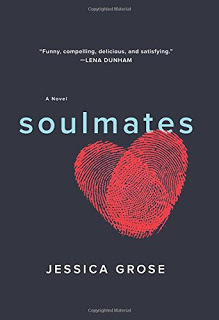
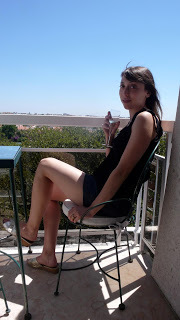 Portrait of the writer lounging in the sun
Portrait of the writer lounging in the sun Who says writers can't have gleaming, gorgeous wood floors?
Who says writers can't have gleaming, gorgeous wood floors?Jessica Grose is an editor at Lenny, also the author of Love, Mom. Her latest, Soulmates is a smart, funny and intensely readable story about what unmakes--or remakes--a marriage, the trials of yoga, and so much more. I'm thrilled to have Jessica here. Thank you, Jessica!
I love the structure of the book, the way we hear from Ethan and then from Dana, and because I am always curious about craft, I want to know why you decided to do the book that way? This is your second book, and I also want to know if it felt harder or easier to do than your first?
Thank you! I decided to do the book from alternating perspectives because I wanted to show how a relationship—particularly a relationship that’s falling apart—can be interpreted so differently by each participant. At first, you hear Dana’s side, and you think Jeez, Ethan’s a philandering prick. But then you hear Ethan’s side of the story, and you start to empathize with him, and see how their worldviews just became more and more incompatible as he becomes enmeshed in his yoga world.
In some ways this book was harder to write. Logistically it was harder, because I wrote the first book before I had kids, and I wrote the second one after my first daughter was born. But I had more fun writing this one. When I wrote Sad Desk Salad, I was pretty insecure about the whole thing. Like: am I even allowed to write a novel? I’m a journalist, not a novelist, etc. etc. Once I had written and published a first book, I was more confident. I started thinking: Even if I’m a bad novelist, I’m officially a novelist now.
As someone who once walked out of a yoga class after being told I “wasn’t challenging myself and what a shame” because I wouldn’t do a headstand in my very first class—I don’t have kind thoughts about yoga. Do you?
I have complicated thoughts about yoga! I have enjoyed it, particularly prenatal yoga, as there’s something really warm and communal about being in a room full of other cranky ladies in your particular physical condition. I really hate some of the sentiments yoga teachers express, which can be a mishmash of faux Buddhism and something I think of as tea bag wisdom (i.e., the saccharine, uplifting sentiments sometimes printed on the side of tea bags). I know some people really get succor from what their yoga teachers say, but I can’t help but roll my eyes so hard it hurts my sockets. There are certainly yoga teachers out there who have studied Buddhism or Hinduism deeply and have something wise to impart. But I’ve never experienced them.
The novel’s is hilariously funny—and in the smartest way possible. Do you make yourself laugh while you are writing, or is it serious craft time for you, instead?
I definitely make myself laugh, although that is so cringeworthy to admit! Above all, I want my books to be entertaining. And if I’m not entertaining myself, I probably won’t be entertaining my readers.
I have to ask about the ending—without giving anything away—because it was so tragically hilariously perfect and it gave birth to what I always call “the never ending story” where you wonder what is going to happen to these people beyond the pages. Did you always know this was how things were going to end up?
I knew that was what would happen to Dana, but what would happen to Ethan changed a lot. And the way Dana got to where she ends up changed dramatically along the way.
I’m fascinated by gurus or all kinds (there is a famous story where Dennis Wilson was telling two girls he had picked up that his guru was the Maharishi, and they said, “Oh, our guru is Charlie Manson.”) Why do you think we are all so desperate to find our answers from anyone other than our deepest selves?
Because getting answers from our deepest selves is difficult and painful, and it’s a lifelong process. It’s much easier, especially if you’re young, or you’re lost, to look to someone or something else to give the answers to you. In some ways, Ethan just traded Dana for a yoga guru. Like when they got married, she was always the Alpha and he just let her decide their lives. And then when they stopped really connecting, he felt adrift and for various reasons didn’t have the ego strength to chart a path for himself.
What’s obsessing you now and why?
American Heiressby Jeffrey Toobin, about the Patty Hearst kidnapping. I love pretty much any history of the early 70s (Brendan Koerner’s The Skies Belong to Us, about how planes used to get skyjacked All. The. Time. in the 70s, is also a favorite). These histories are particularly comforting to read in this moment, because with the rise of Trump everything seems so crazy, but then you read about the violence and social disorder of the early 70s and you think, nope, not so crazy after all.
What question didn't I ask that I should have?
¯\_(ツ)_/¯
Published on September 28, 2016 08:49
September 23, 2016
And now for something completely different, Alexander Maksik, author of SHELTER IN PLACE, writes something short and brilliant for the blog
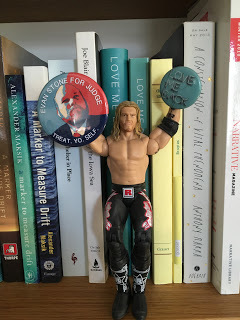 The author's book shelf and book, and the phenomenal LOVE ME BACK
The author's book shelf and book, and the phenomenal LOVE ME BACK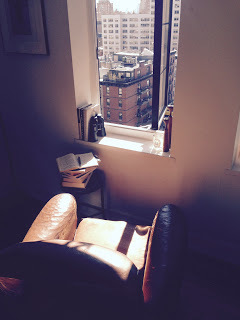 Portrait of the writer's reading chair
Portrait of the writer's reading chair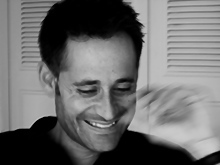 The incredibly talented author
The incredibly talented author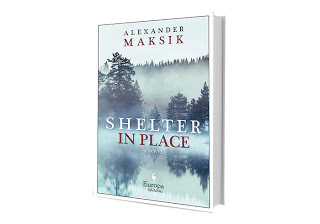 The novel you need to read RIGHT NOW
The novel you need to read RIGHT NOWSometimes books undo you as you read them. Alexander Maksik's Shelter in Place did that to me. About mental instability, prison celebrity, love, loss and desperation, it's shockingly original. I raved about it in the San Francisco Chronicle because it was so audacious and original. A few days ago, I met him at the New England Independent Bookstore Association Reception and he was gracious, funny, brilliant, so I asked him to write something for my blog. And he did.
He's the author of A Marker to Measure Drift, which was named a New York Times Notable Book and a finalist for both the William Saroyan Prize and Le Prix du Meilleur Livre Étranger; You Deserve Nothing, and SHELTER IN PLACE, which I tell you is like nothing you have ever read. Truly, a favorite book of the year for me. He's also a contributing editor at Condé Nast Traveler, his writing has appeared, or is forthcoming, in Best American Nonrequired Reading, Harper’s, Tin House, Harvard Review, The New York Times Book Review, The New York Times Magazine, The Atlantic, Salon and Narrative Magazine, among other publications. Maksik is the recipient of a 2015 Pushcart Prize, as well as fellowships from the Truman Capote Literary Trust and The Corporation of Yaddo. He is the co-artistic director of the Can Cab Literary Residence in Catalonia, Spain and his work has been translated into more than a dozen languages.
Alex--thank you, thank you, thank you.
At Night We Slept Beneath the Stars
by Alexander Maksik
“How are you?”
“I am fine,” Hélene answers, biting at her bottom lip.
I am fine. No contraction. Emphasis on the verb.
Hélene is sixty-four years old, soon to retire from her job as a mid-level bureaucrat in a government agency. Hair thinning, complexion of someone who’s spent much of her life beneath fluorescent lights.
“Do you go out to lunch?”
“Yes.”
“Yes?”
“Yes, I do.”
“Yes you do?”
She lets out a frustrated sigh.
“Yes I do go out to lunch.”
She knows the drill but does her best to avoid it.
I smile at her. She shifts uncomfortably in her chair.
“Do you have a favorite restaurant?”
She narrows her eyes. Purses her lips. Is she thinking or does she not understand the question? A silence passes.
“No.”
I raise my eyebrows.
She sighs. “No, I don’t have a favorite restaurant.”
“Nowhere that you love? Or that you like very much?”
She shakes her head.
I let her slide. She taps the tip of her pencil against a pad of yellow paper making small dark marks on the page. She looks up at me. Eyes so flat.
“Where do you eat at lunchtime?”
“A bistro.”
I smile.
“I eat at a bistro near the place where I am working.”
“Where you work? Near your office?”
“Yes, I eat at a bistro near my office where I work.”
“Do you eat there every day?”
Her cheeks take on new color. She scratches at her neck.
“Yes, I do.”
She pauses.
“Eat there every day.”
Does she think I’ve trapped her? Forced her to reveal something she finds shameful about her life?
“Is it a good bistro?”
“It is fine. The bistro is fine.”
We’re stuck. I’m stuck. I want to talk about what is good, what is better, what is best. That’s the lesson.
“Why are you studying English, Hélene?”
“It is interesting to me.”
“Really?” I laugh. “Is it interesting now?”
“Yes it is.”
“It isn’t boring?”
She suppresses a laugh as fast as it comes.
“No, it isn’t boring.”
Her eyes are brighter now. I try another tack.
“Do you like to travel?”
“Yes, I like to travel.”
She surprises me. She’s sailed across the Indian Ocean, traveled through the Baltics, Patagonia, Easter Island, Senegal, Kenya, India, Tanzania, Botswana, Sri Lanka, Mali.
She shrugs her shoulders as if to say, what did you expect? Some frightened old lady?
“What was your worst trip?”
“My worst trip was south of France.”
“To the south of France?”
“Yes, my worst trip was to the south of France.”
“Why?”
“I didn’t feel good with my sister. It wasn’t nice with her.”
She glides her palm over the desk, looking past me.
“You didn’t get along with your sister?”
“Yes. I did not get along with my sister.”
“What was your best trip, Hélene? The very best trip you ever took?”
She watches her hand moving from side to side across the table.
“Tanzanie,” she says, but not to me.
“Tanzania?”
“Yes, Tanzania. It is the best trip I ever made.”
“Why? Why was Tanzania the best trip you ever took?”
“Why. Why. Why. You always say it.” She shakes her head.
We both watch her hands, her fingers spread out across the Formica, still now, as if to hold the table down.
“We climbed Kilimanjaro mountain.”
“You did? You climbed Mount Kilimanjaro?”
She nods, smiling again.
“It was very enormous.”
I try to imagine this woman climbing nineteen thousand feet into the air.
“Is that why it was your favorite trip?”
She shakes her head.
“No, it is that we were sleeping outside. In night.”
“At night you slept outside?”
She nods. There’s depth now to her expression.
“At night we slept outside.”
“That’s why it was your favorite trip?”
“Yes. Because we could see the stars.”
I nod.
“You slept outside under the stars?”
She’s nodding.
“Yes, we slept under the stars.”
“It’s a beautiful sentence isn’t it?”
“Yes, it is. It is a beautiful sentence.” Now she seems gleeful.
I stand up and uncap a thick marker. There’s a large tablet of blank pages fixed to an easel.
I write in full, black letters across the center of the page:
AT NIGHT WE SLEPT BENEATH THE STARS.
Her eyes are bright.
“At night we slept beneath the stars. Will you say that?”
She writes the sentence into her notebook. She frames it carefully with an elegant rectangle.
“At night. We slept beneath. The stars.”
“At night we slept beneath the stars,” I say, moving my hand as if I might know something about music.
“At night we slept beneath the stars,” Hélene says.
“Yes,” I say.
“At night we slept beneath the stars.”
“Yes.”
“It’s a small poem,” I say.
“Yes,” she says. “It’s a beautiful poem.”
Published on September 23, 2016 13:34

